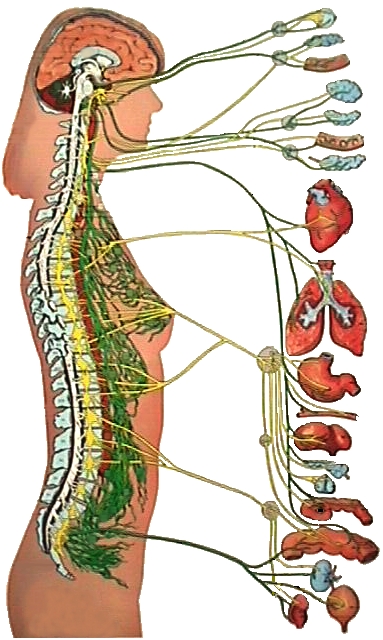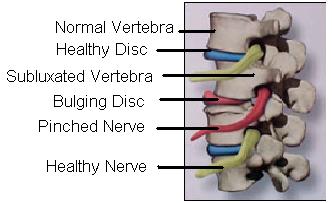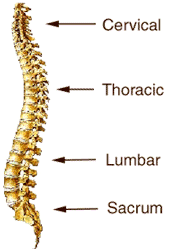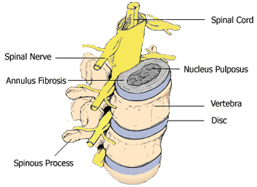|

Your spinal column, or vertebral
column, is
your central frame. It is a series of movable bones which begin at the
base of your skull and end in the centre of your hips. Although the
spine
is composed of 24 individual vertebrae, a sacrum and a coccyx, it
functions
as one dynamic organ upon which the structure is dependent for support
and movement. There are seven cervical (neck) vertebrae, twelve
thoracic
(mid-back) vertebrae, and five lumbar (low-back) vertebrae. These
vertebrae
are stacked up like building blocks, and between them are located
fibrocartilages
(or discs). These discs help to cushion shock, reduce friction and
allow
movement to occur.
 |
Within the
vertebral column
is the spinal cord which extends down the spine from the brain. The
spinal
cord gives off 31 branches called spinal nerves. These spinal nerves
exit
through a series of openings between the vertebrae. The nerves leave
the
spine and form a very complicated network which ultimately influences
every
living tissue in your body. |
 |
| Accidents,
falls, poor posture,
repetative stress, over-exertion, difficult birth, or any other factor
which may cause an inability of the spine to move as a dynamic organ,
can
result in displacements or derangements of one or more of these
vertebrae,
causing irritation to the spinal cord or spinal nerve roots directly by
pressure or indirectly through reflexes. This is called a Vertebral
Subluxation. |
 |
These subluxations, in turn, may
cause malfunctions
in your body. Chiropractic teaches that subluxations can
cause
a disturbance of delicate body functions resulting in an increased
susceptibility
to disease processes. Alleviating or removing the irritation to spinal
nerves by correcting or reducing the subluxation, and re-establishing
normal
spinal mobility, the doctor of chiropractic seeks to cause your body to
operate more efficiently and more comfortably.
|



